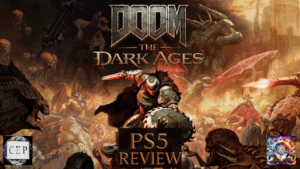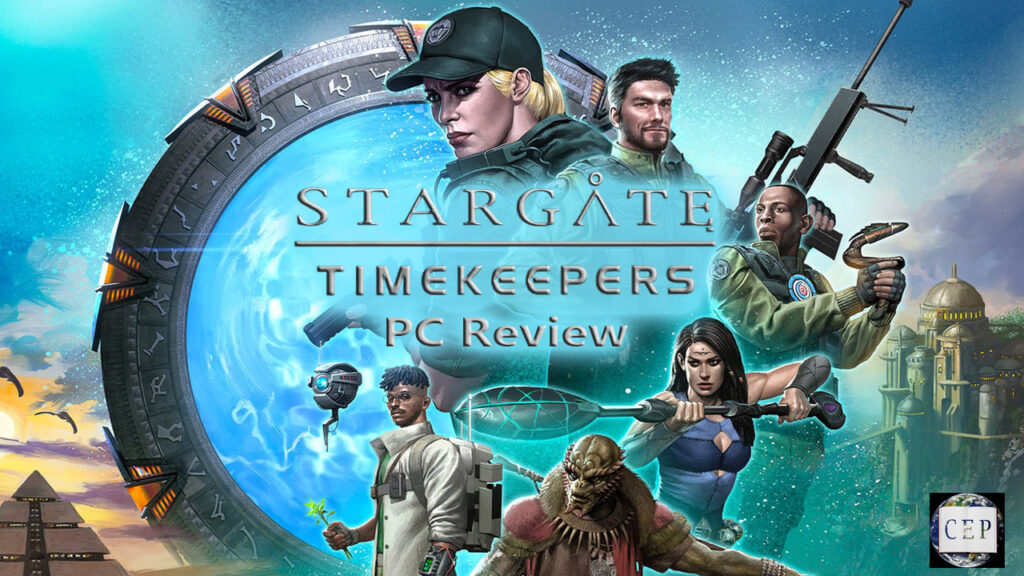
Stargate: Timekeepers Review PC 2024 | Honest Game Opinion
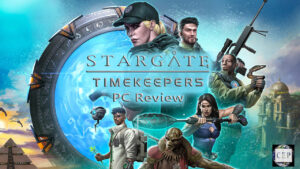
Welcome to our Stargate: Timekeepers review for PC! Read about the story, gameplay, visuals, sound, and our final opinion of this tactical game!
Operating System: Windows 11, Steam
Application Category: Game
3.9
Welcome to our Stargate: Timekeepers review for PC! Slitherine developed the tactical action game and published Part 1 on 23 January 2024. It follows the storyline after the Stargate SG-1 Season 7 television series. Starting with Max Bolton and Eva McCain, you’ll use stealth, weapons, and other items to complete each stage to assist the Jaffa Resistance.
In my Stargate: Timekeepers review, I’ll take you through the various story and gameplay elements to see what it’s like to experience the plot and mechanics for the first time. It will require patience and tactical thinking on your part if you want to succeed.
Disclaimer: I received a free code for Stargate: Timekeepers from the publisher. Still, this review is based on my personal experience of the game and is not impacted by the gift.
Also, thank you to Takealot, Fix Effects, and T-Wolf for this stunning T-Wolf Keyboard, Mouse, Headset, and Mousepad Gaming Combo for my PC so that I could enjoy a lit, exhilarating gaming experience.
Story Review | Defeat the Goa’uld Threat
My Stargate: Timekeepers review begins by covering the story elements. As already mentioned in the intro, it takes place after Season 7 of the TV series, which is great for fans of the show. Even if you don’t watch it, you’ll quickly be brought up to date with what’s happening, as it’s basically a stand-alone plot.
Enter the Stargate SG-1 Universe
The tactical game begins with the Battle of Antarctica. Max and Eva set off in the snow hills to discover enemies around a spacecraft. Trying to assist SG-1 against the Anubis fleet, their investigation leads them to unravel a troubling mystery. From there, each chapter in Stargate: Timekeepers becomes more intriguing.
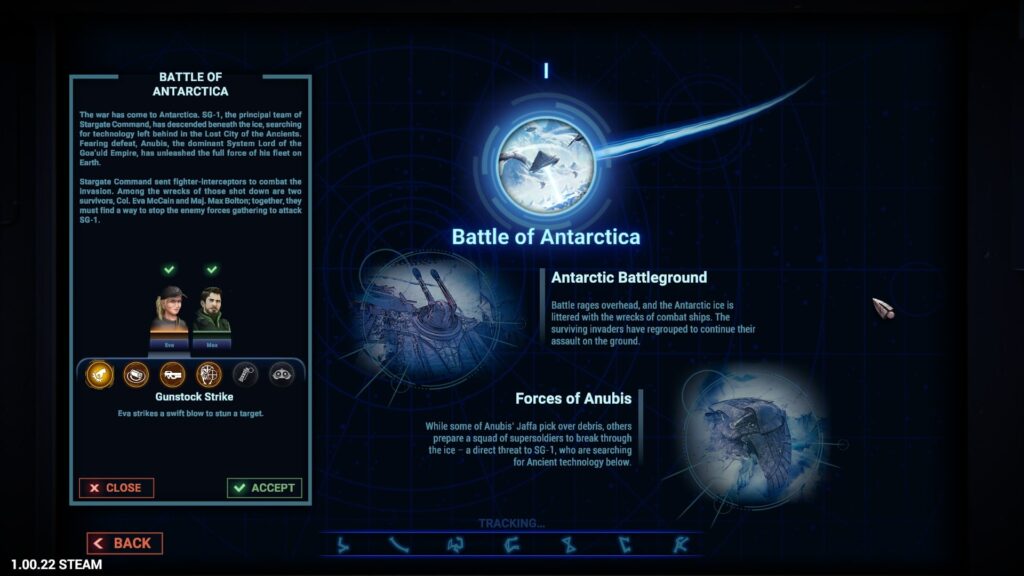
Aid the Jaffa Resistance
While playing the game for my Stargate: Timekeepers review, I eventually progressed towards assisting the Jaffa resistance. Missions led me to take on Moloc and his army, and I needed to make an alliance with the Unas. The plot is rich with elements from the SG-1 show while also bringing new adventures for your enjoyment.
Team of specialists
You won’t only play with Eva and Max. Each mission has a unique combination of characters with specialised skills to help you complete the stage. Sam Watson appears with expert knowledge of alien technology, while Derreck Harper is excellent with drones. You’ll even have Jaffa rebels along for the ride, such as A’ta with her short-range skills.
Several adventure-rich missions
All in all, there are 14 missions to complete in Stargate: Timekeepers Season 1 Part 1. There are stunning locations in each one, with the quests and maps becoming more complicated as you progress. Once you have all the campaigns unlocked on your screen, it gives you that sense of achievement.

How long to play Stargate: Timekeepers?
Personally playing the game for my Stargate: Timekeepers review, each mission took me around an hour, if not more later on. Reruns will go faster, but your first playthrough of Season 1 Part 1 will take you about 13 to 20 hours in total, and probably more. It all depends on how quickly you’re able to solve each map and move on to the next.
Final Thoughts on Stargate: Timekeepers Review Story Elements
While I saw the original Stargate movie in 1994 (yes, I’m old), and a few spin-offs, I’ve never seen the SG-1 series. Having played the tactical game, I feel inspired to binge-watch the first seven seasons leading up to Stargate: Timekeepers.
The story is intriguing enough to want to know what’s coming, but that’s if you can get past the combat and complete each map. More on that later in my Stargate: Timekeepers review.
Gameplay Review | Tactical Stealth Action, Ready to Roll
Next up in my Stargate: Timekeepers review is the gameplay analysis. Here, I’ll show you what it’s like to play the tactical game, where is where I struggled a bit. Still, determination broke through, and with patience, I eventually started enjoying the mechanics.
Learning how to play Stargate: Timekeepers
One of my favourite elements of the game is that there are enough tutorials throughout the game to show you how things work. You’ll spot question mark holograms on your journey. When you click on them, a video and text appear, telling you how key mechanics work. Basically, it tells you what to try out next. Even so, don’t expect to master it immediately. It may take you a few tries before you get it right.
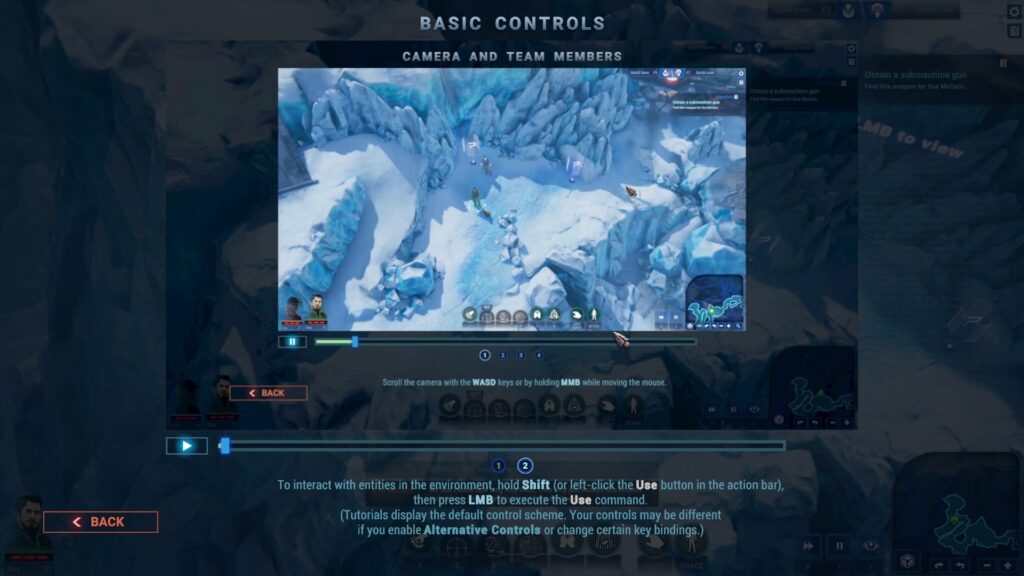
Line-of-Sight analysis
The first aspect you’ll need to become acquainted with is the enemy’s line of sight. When you click on one of them, an area before them lights up, showing how far and in what area they can see. There’s even a shaded area further along where they will spot you if you walk or run, but not crouch. It’s an intuitive system that you’ll need to master if you want to succeed.
Even if one of them spots you, it’s not the end of the world…yet. I’ve learnt from my experience playing for my Stargate: Timekeepers review that you can quickly dispatch them if you’re fast enough. Should they sound an alarm, just hide somewhere until they stop looking for you, and all enemies reset to default positions. However, you might as well reload your recent save if two or more start shooting at you. I’ve seldom survived these encounters at the start.
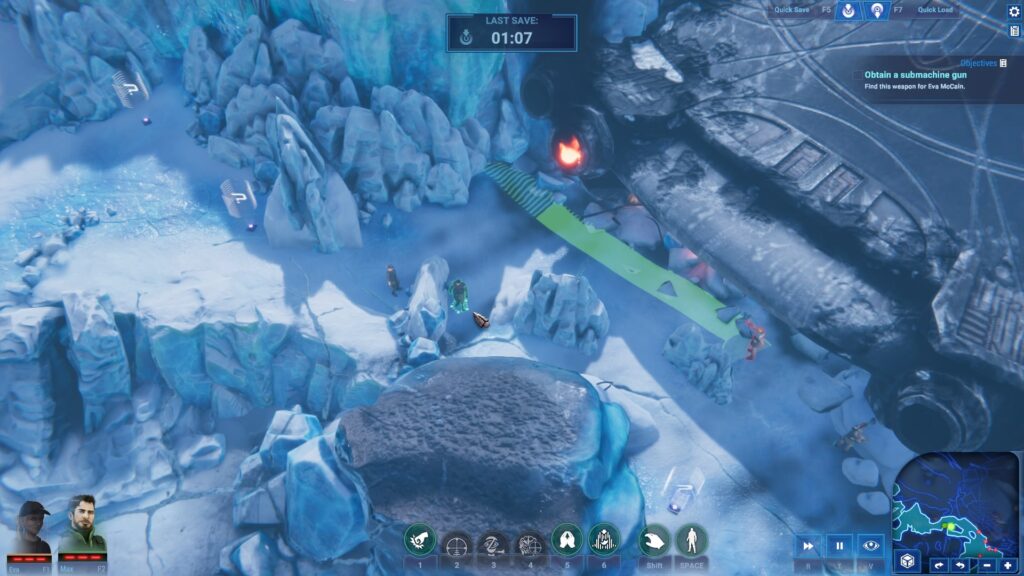
Save, save, save
Speaking of which, get used to saving as much as possible. If you’re like me that struggles with tactical games, you’ll want to save after each successful encounter as you proceed along the map. Nothing is more annoying than passing three areas with a smile on your face, just to die and then have to do them all over again, and dying where you succeeded before. Please….take my word for it.
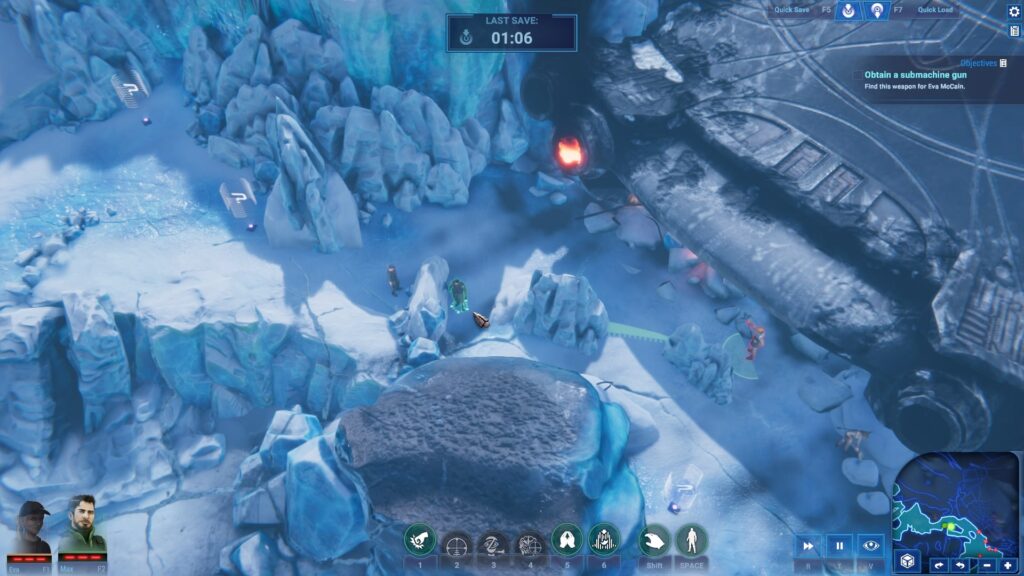
Tactical planning and deployment
That’s the perfect segue for the next point in my Stargate: Timekeepers review. Except to die multiple times as you proceed through the various locations, especially at the beginning. Just when you think you’re going to make it, a guard turns and sees you, and all hell breaks loose. What I’ve learnt from playing the game is that you need to browse the immediate area and scout for possible ways to sneak past or remove the guards. When you fail, try something different or check your timing.

Stealth attacks and throws
For the most part, you’ll use stealth moves. There are keys for quickly knocking guards out and then tying them up. If you don’t, they wake up and raise the alarm. The best part I enjoyed with a giggle was throwing the sleeping guards over cliffs, only to hear them scream as they woke up. You can also use character items that you throw close to guards to distract them before taking them out.
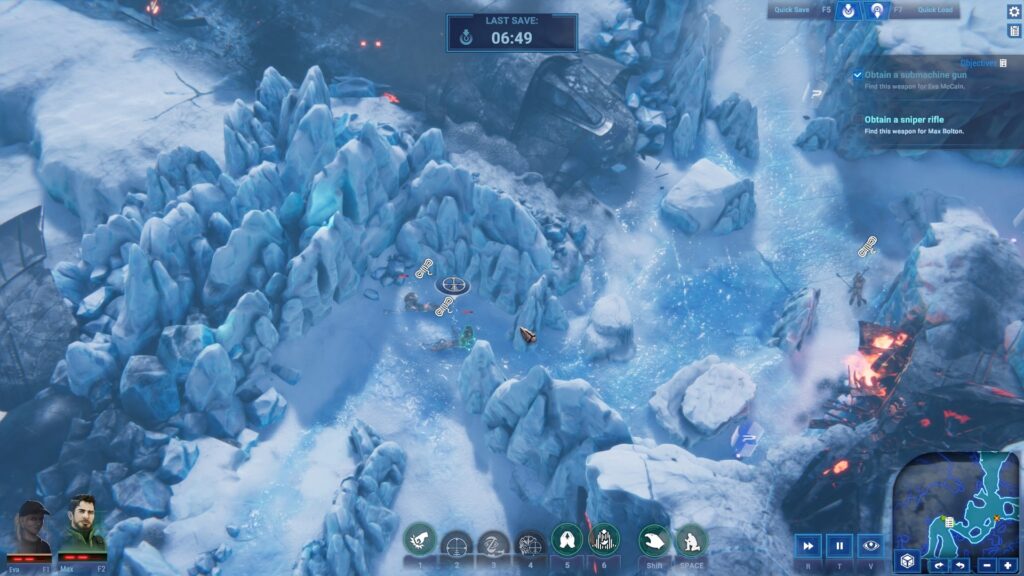
Synchronised combat
One element I urge you to master early on is the synchronised combat feature. You literally stop time so you can tell each of your characters what you want them to do. You’ll see a preview of what will happen, giving you a chance to change your plan of action. When you’re ready, hit the sync button and watch both characters jump into action simultaneously. If any aspect is going to get the highest praise in my Stargate: Timekeepers review, it’s this one.
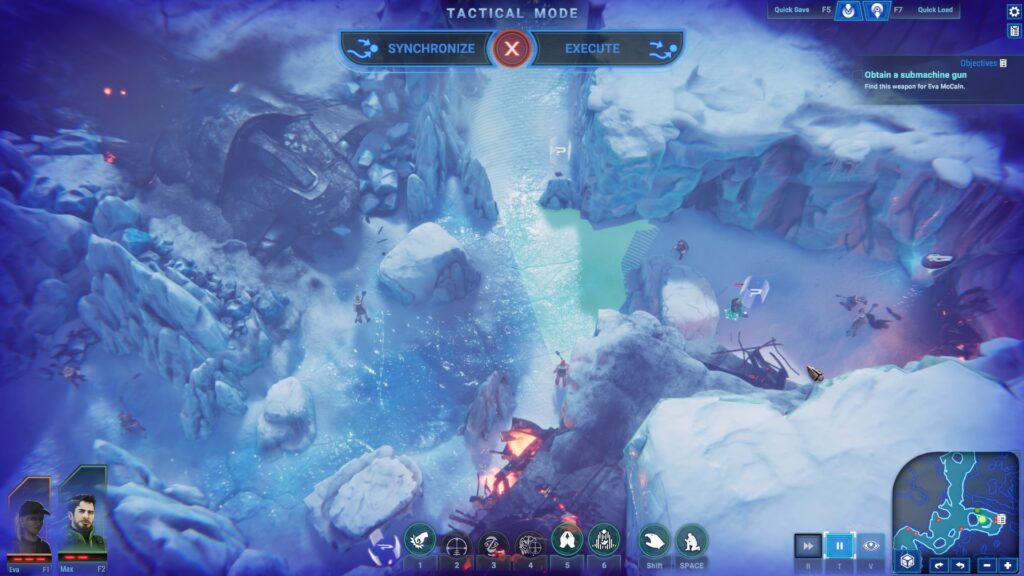
How difficult is Stargate: Timekeepers?
If you had asked me closer to the launch date, I would have said extremely difficult. It almost got to the point where I nearly abandoned my Stargate: Timekeepers review. However, I decided to try again while knowing what to expect, and did much better the more I played. So, expect a challenge at every stage, becoming increasingly more complex with more satisfaction when you win.
Final Thoughts on Stargate: Timekeepers Review Gameplay Elements
I’ve never really been a big fan of tactical action games. Having to plot out each movement carefully and dying several times along the way isn’t my idea of fun, which is probably why I only played one Metal Gear Solid game in my life and moved on. Yet, Slitherine has somehow made me give it a genuine chance with Stargate: Timekeepers, and I eventually got the hang of it. If you enjoy this genre, then you’ll love these mechanics.
Audio-Visual Review | Locations, Sound, Action!
You’re almost at the end of my Stargate: Timekeepers review. Here, I’ll speak more about how the tactical game looks and feels. Since it’s not an open-world concept, you’re limited to the locations where the story and combat takes place.
Stunning locations
There’s no doubt that Stargate: Timekeepers has beautiful visuals. The way the ice hills glisten, the gorgeous green forests, the interesting bases and weapons, every part of the imagery has a role to play. Even the loading screens have outstanding masterpieces of art awaiting you while you get ready for the next chapter. I honestly enjoyed investigating every aspect of each location on the screen, such as the mushroom-type fauna around bare tree trunks.
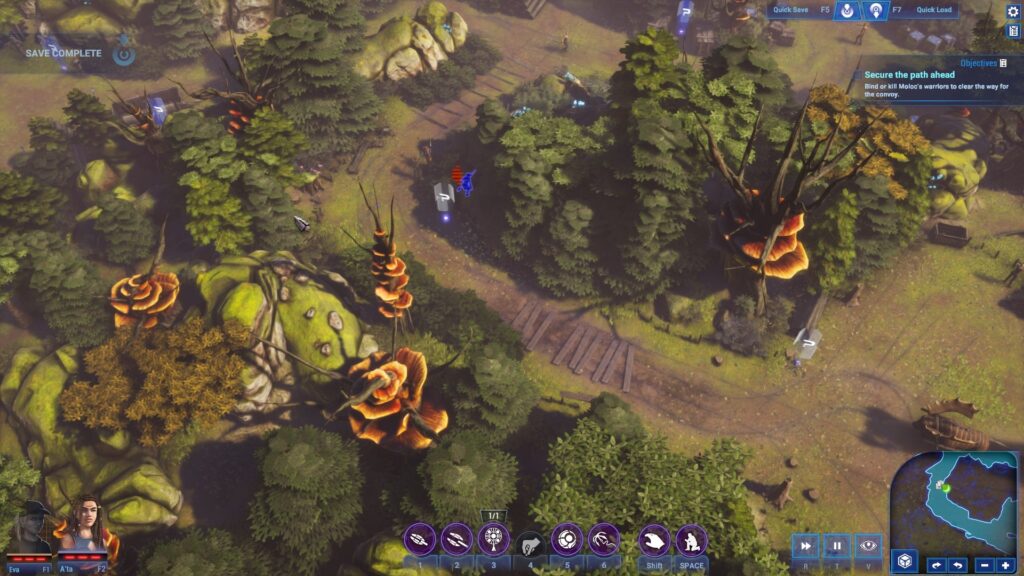
Interesting effects and animations
The visual data provided in the tactical game is outstanding. You’ll know when a guard is tied up by a small rope sign. There are many such icons in the game, enhancing your gaming experience. An alarm sounds when a guard sees you, warning you to hide. Even the combat makes sure you know there’s trouble, and explosions are fun to watch.
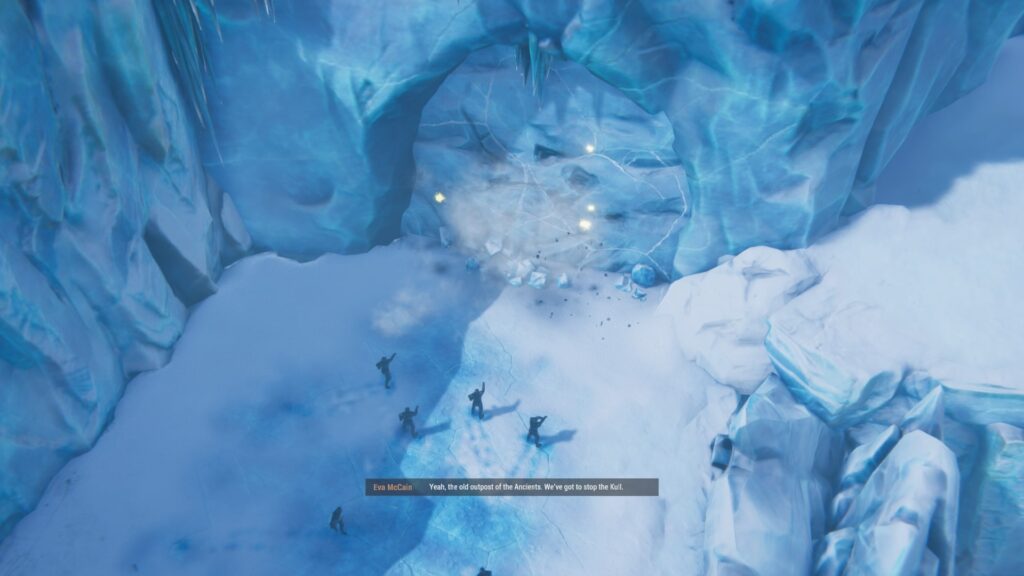
Enjoyable voice-acting
There’s also more than just reading text. Whenever one of the characters speaks, you’ll hear them, showing Slytherine’s dedication to making sure you enjoy Stargate: Timekeepers. NPCs and enemies also have voices, which you’ll need to listen out for when you’re overhearing key discussions.
Soft music and tactical sounds
You won’t hear dead silence in each mission. As you journey, you’ll have soft melodies travelling with you, giving your brain a sense of peace in your stealth modes. The pace picks up a bit when enemies see you, or there’s combat, but I generally enjoyed the soft background music. Most actions also have sounds to alert you to what’s happening, which is key to surviving.
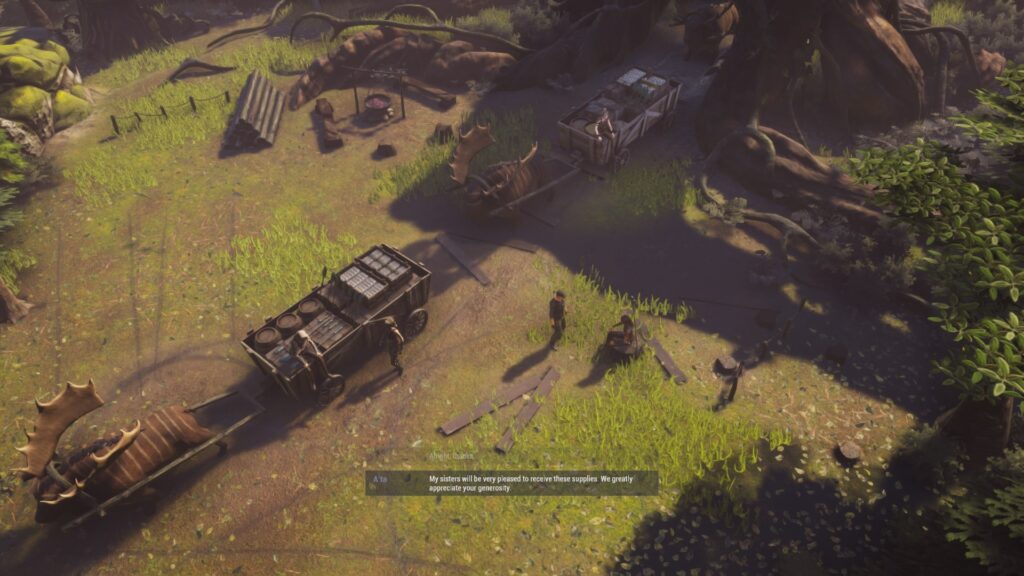
Final Thoughts on Stargate: Timekeepers Review Audio-Visual Elements
Of all the elements covered in my Stargate: Timekeepers review, the audio-visual is my favourite. It’s amazing how graphics and sound can be used to make a game more enjoyable and help you progress through each stage.
Stargate: Timekeepers Review PC: Final Verdict
On the one hand, I enjoy several elements of Stargate: Timekeepers. The story adds to the TV series, which means more content for fans of the show. The visuals are beautiful, and the sound elements are spot on. As for the gameplay, I found it incredibly challenging at first, but after some determination, I feel like an expert stealth killer. Having said that, I don’t know if I’d return to this game genre anytime soon. Still, this title stands out among the list of tactical games.
Is Stargate: Timekeepers worth buying?
If you’re a fan of tactical games and the Stargate universe, go for it, yes. You’ll have fun and enjoy the challenge of each level. At my age and with a lack of interest in tactical games, I would never have tried this game if Slitherine hadn’t offered it to me. I prefer their list of real-time strategy and building games.
What other games are like Stargate: Timekeepers?
As I’ve said enough in my Stargate: Timekeepers review already, I don’t have much experience with games like these. Just from my quick research, here are some titles with similar gameplay mechanics:
- Aliens: Dark Descent
- Shadow Gambit: The Cursed Crew
- Age of Darkness: Final Stand
- Weird West
What I liked and didn’t like about Stargate: Timekeepers
Finally, here’s a recap of what I loved and disliked about Stargate: Timekeepers:
Pros:
- Stunning locations and visuals
- Engaging sounds and voice-acting
- Intriguing plot
- Variety of characters
- Detailed maps
- Can easily be adapted into a book (I call dibs!)
Cons:
- Challenging gameplay that results in dying several times
- The need to constantly save
Enjoy Our Fantasy and Mystery Novels!
After delving into my comprehensive PC review of Stargate: Timekeepers, we invite you to show your support for our team and writers by visiting our online bookshop. If you’re a fantasy enthusiast, immerse yourself in the enchanting worlds of the Celenic Earth Chronicles by Shaun M Jooste, The Legend of the Oracle Runes by Debbie Stansfield, and The Ice Queen by Elena van Peborgh.
For those seeking the pure essence of poetic prose, explore Reveries and Refrains by Russell Fourie-Kidson, an exquisite collection inspired by the melodies of Ben Howard.
Also, here’s a nice collector’s book if you would like a guide to the game.
